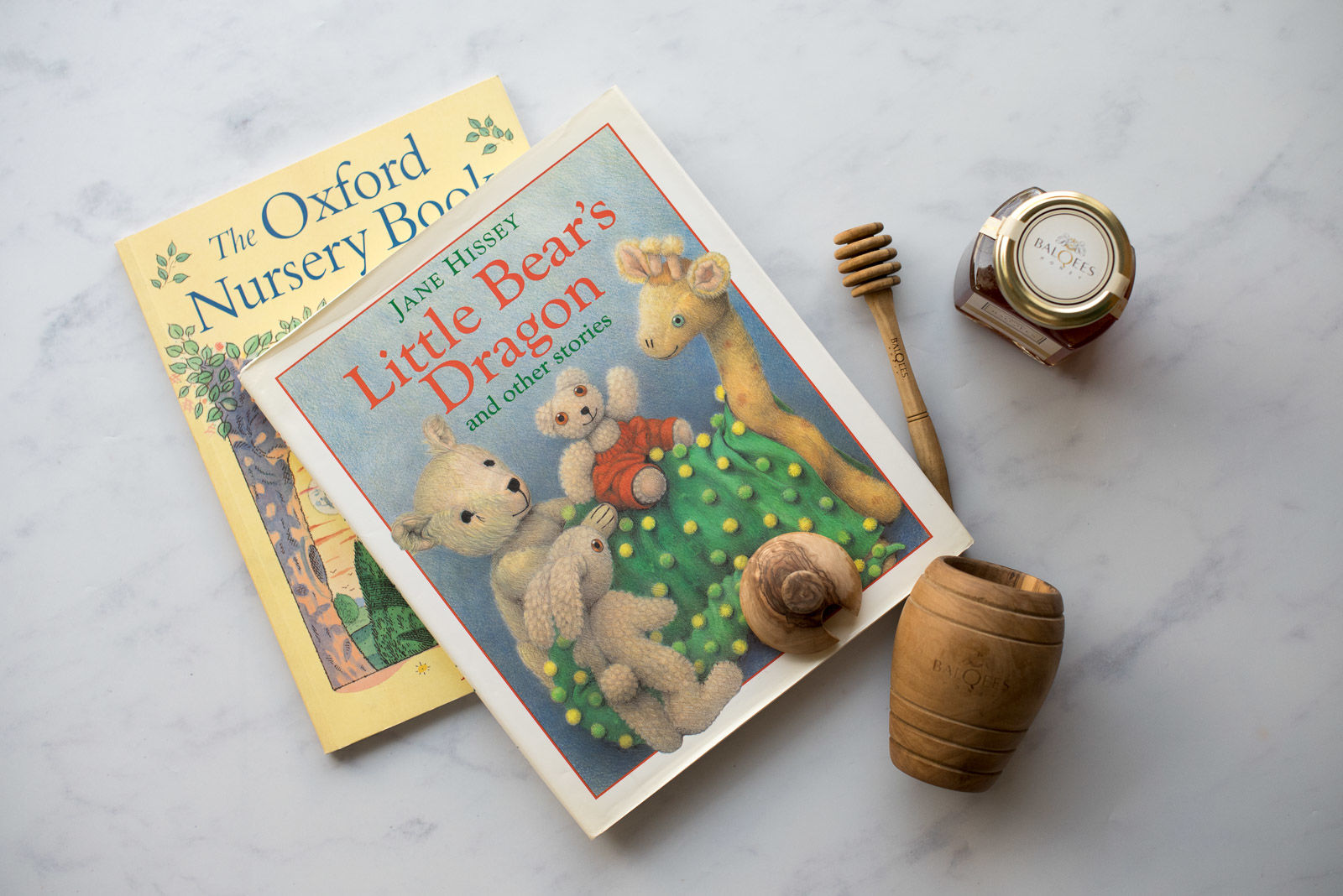
Children, bees and raw honey have been connected in many ways through the ages – from the benefits of eating the natural goodness of the hive, to well-loved favourites in children’s literature, to exploring these fascinating creatures.
The mystery and industry of honeybees has been the inspiration for very, many children’s books through generations.
In the wizarding world of Harry Potter bees create their own magic. The Weasley family are keen beekeepers, and J.K. Rowling was inspired to take Dumbledore’s name from a traditional Dorsetshire word for bumblebee.
The Cat in the Hat delves inside the world of bees in his own unique way by going inside the hive to discover where honey comes from in ‘ Show me the honey‘.
The Ant and Bee series of books hail from the 1950s but still remain a popular aid for children learning to read with their engaging characters drawn by Angela Banner.
And of course the Winnie-the-Pooh books written by A.A Milne with illustrations by E.H Shepard were probably one of the first stories to spike a young child’s mind and imagination when it comes to raw honey and bears.
‘Isn’t it funny, How a bear likes honey? Buzz! Buzz! Buzz! I wonder why he does?’ From Winnie-the-Pooh, the Wrong Bees
The books might date back to 1926 but Winnie-The-Pooh is just as popular today, in fact there was an exhibition held at the V&A In London earlier this year where record numbers of little children visited with their parents, they played pooh sticks and got to see the original drawings like the one of Pooh diving into a honey pot or the one where he is looking up at a honey bee or the famous image of Pooh sheepishly reaching for the top shelf and a beautiful jar of honey.
Many of Pooh’s adventures were inspired by the Milne family escapades and Christopher Robin playing with his toys in Ashdown Forest, East Sussex that became known as Hundred Acre Woods in the books.

According to a report produced by Plymouth University in the UK and Western Sydney University in Australia there are a wide range of benefits to children learning in the natural environment. The benefits of outdoor learning go beyond improving academic intelligence.
Newspaper Headline: A 10-year-old entrepreneur says that studying the hardworking nature of the bees in his backyard honey start-up business has inspired him to aim high.
Finn Tolhurst has developed his own start-up on the Gold Coast of Australia. Motivated by a school discussion and with a passion for wanting to save the planet he looked to the flow hive model of keeping bees in his backyard and is raising money for the Adventist Development and Relief Agency beekeeping project in Malawi.
“There’s a reforestation project, the bees help the farmers get honey, families get honey to generate an income,” Quite the entrepreneur and environmentalist Finn says about the bees, “I can just watch this generating, hardworking community all day.” I guess there are worse ways to be spending time? He raised almost $3,000 by auctioning off his first jar of honey to the highest donor.
It seems children really can gain a lot from understanding bees and being close to nature.
A National Geographic feature from 2015 highlights how bees are vital to the world’s food supply, and to educate schoolchildren about the importance of honeybees. The Sweet Virginia Foundation used a highly interactive learning programme allowing kids to get close to honeybees, donning beekeeper suits and interacting with a hive.
Dan Price, Founder of the Sweet Virginia Foundation says about the programme, ”it shows what’s happening in nature is not just random chaos but there is beauty and order to it and this little creature creates a great opportunity to have children see that.”
If you would like your child to be the next apiarist then have a read of the book, Bees, Hives, Honey! Beekeeping for Children, by author Tim Rowe
It’s a practical guide for would be beekeepers of any age, but especially designed for children and teenagers. It is full of colour photos showing how to build a hive, how to catch a swarm, how to look after the bees, and harvest the honey. There’s a section for parents, too, with advice on how to guide a beekeeping group and keep everyone safe.
The new release of Maya the Bee: The Honey Games is released on the 6th July. The premise goes along the lines of an over enthusiastic Maya accidentally embarrassing the Empress of Buzztropolis and is forced to unite with a team of misfit bugs and compete in the Honey Games for a chance to save her hive.
Was Winnie the Pooh right?
The answer is that bears do love honey and are attracted to beehives. But unlike in Winnie the Pooh, the bears eat more than just honey. They will also consume the bees and larvae inside the beehive, which are a good source of protein. Both brown and black bears will raid beehives.
Naughty bears!
Where to find children’s books about bees and honey:
This Pinterest board of children’s books about bees has lots of inspiration.
What is happening to the bees? Five books to introduce children to the life and work of the honeybee is another good source.
Books about bees for adults and children chosen by Friends of the Earth
Sign up for exclusive offers, recipes and the latest raw honey news.